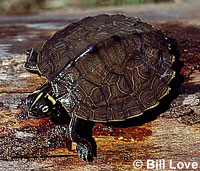U.S. Fish and Wildlife Service publishes 2010 CITES proposals.
The U.S. Fish and Wildlife Service (USFWS) has published a notice describing proposed resolutions, decisions and agenda items that the United States may submit for consideration at the conference of the Convention on International Trade in Endangered Species of Wild Fauna and Flora (CITES). Comments will be accepted until Sept. 11.
CITES is an international treaty that establishes a system of import/export regulations to prevent the over-exploitation of plants and animals listed in three appendices (Appendix I, II, III). Different levels of trade regulations are provided depending on the status of the listed species and the contribution trade makes to decline of the species.
Species listed in Appendix I are threatened with extinction and trade is permitted only under strict circumstances. Species listed in Appendix II are impacted by trade at a level that requires monitoring in order to avoid threats to extinction. Appendix III listings essentially provide a monitoring system that allows countries to enlist assistance of international trading partners to better control trade in native species.
The 15th Conference of the Parties of CITES is scheduled for March 13 to 25, 2010, in Doha, Qatar. Currently, 175 countries, including the United States, are parties to CITES.
The Pet Industry Joint Advisory Council (PIJAC) has issued a pet alert in which it notes a number of species, mainly herps, that the U.S. may consider for inclusion on the CITES regulated species list.
They include:
1. Species the United States is likely to submit for consideration:
- Red and Pink coral (Corallium spp.) for inclusion in Appendix II
- Bobcat (Lynx rufus) for removal from Appendix II.
2. Species for which the U.S. is “undecided” for including in Appendix I or II, pending receipt of additional information:
- Nautilids (Allonautilus Spp.) for inclusion in II
- Freshwater sawfish (Pristis microdon) for transfer from II to I
- Spiny dogfish (Squalus acanthias) for inclusion in II
- Devil and manta rays (Mobulidae) for inclusion in II
- Freshwater stingrays (Potamotrygonidae) for inclusion in II
- American eel (Anguilla rostrata) for inclusion in II
- Common snapping turtle (Chelydra serpentine) for inclusion in III (This involves a unilateral decision by the US since it involves inclusion in III)
- Spotted turtle (Clemmys guttata) for inclusion in II
- Diamondback Terrapin (Malaclemnys terrapin) for inclusion in II
- Florida softshell turtle (Apalone ferox) for inclusion in II
- Smooth softshell turtle (Apalone mutica) for inclusion in II
- Spiny softshell turtle (Apalone spinifera) for inclusion in II
- Giant leaf-tailed gecko (Uroplatus giganteus) transfer II to I
3. Species the U.S. is unlikely to submit unless there is significant additional information:
- Blue-sided frog (Agalychnis annae) for inclusion in II
- Morelet’s tree frog (Agalychnis moreletii) for inclusion in II
- Rancho Grande harlequin frog (Atelopus cruciger) for inclusion in II
- Helmeted water toad (Caudiverbera caudiverbera) for inclusion in II
- Santa Fe frog (Leptodactylus laticeps) for inclusion in II
- Giant Asian river frog (Limnonectes blythii) for inclusion in II
- Fanged river frog (Limnonectes macrodon) for inclusion in II
- Giant Philippine frog (Limnonectes magnus) for inclusion in II
- Albanian water frog (Rana shqiperica) for inclusion in II
- Rain frog (Scaphiophryne boribory) for inclusion in II
- Alto Verapaz salamander (Bolitoglossa dofleini) for inclusion in II
- Kaiser’s spotted newt (Neurergus kaiseri) for inclusion in I or II
- Kurdistan newt (Neurergus microspilotus) for inclusion in II
- Alligator snapping turtle (Macrochelys temminckii) for inclusion II
- Map turtles (Graptemys spp.) for inclusion in II
PIJAC also highlighted several documents and resolutions that the U.S. might submit for consideration at the conference. Those issues include:
- A discussion document on how CITES might impact climate change.
- A discussion document on conservation issues associated with the management of the snake trade in Asia.
- A discussion document on issues related to the registration and monitoring of Appendix I breeding operations.
- A resolution dealing with issues associated with the quality of data and accuracy of the descriptions on CITES permits and annual reports.
- A document reflecting the disappointment of the United states on the lack of progress in the development and/pr implementation of a regional plan for the African grey parrot (Psittacus erithacus).
- A document setting “zero export quotas” for species recommended for trade suspension
- A document empathizing “sound science” when making CITES non-detriment findings for importation of Appendix I species as well as non-detriment findings covering exports of Appendix I and II species.
Click here to read the entire notice published by the U.S. Fish and Wildlife Service.
Comments on species proposals should be sent to:
Division of Scientific Authority
U.S. Fish and Wildlife Service
4401 North Fairfax Drive – Room 110
Arlington, VA 22203
Email scientificauthrotiy@fws.gov, or fax 703-358-2276.
Comments on resolutions/decisions should be sent to:
Division of Management Authority
U.S. Fish and Wildlife Service
4401 North Fairfax Drive – Room 212
Arlington, VA 22203
Email CoP15@fws.gov, or fax 703-358-2298.
PIJAC is fielding questions for members of the pet industry. Contact Marshall Meyers at marshall@pijac.org or 202-452-1525.


